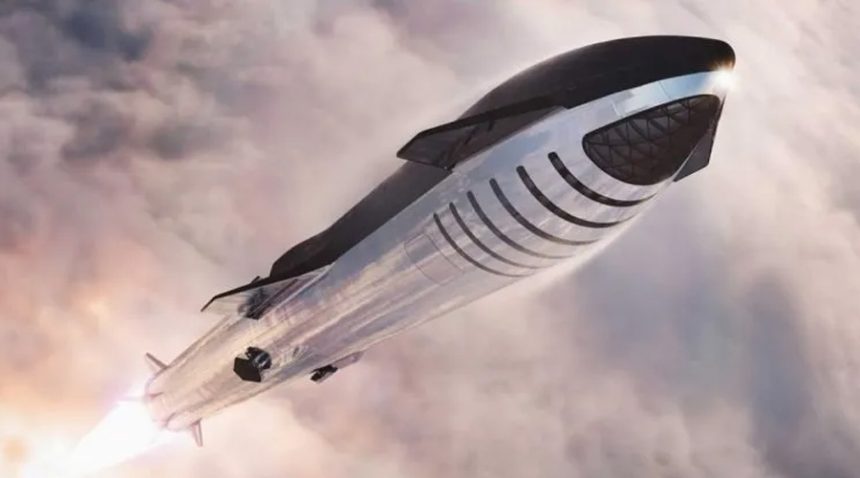The Future of SpaceX: Elon Musk’s Starship Program and Upcoming SpaceX Plans with NASA
SpaceX, under the leadership of Elon Musk, has consistently pushed the boundaries of aerospace innovation. With the Starship program making significant strides, the question arises: What lies ahead for SpaceX after Starship? This article delves into the company’s future endeavors, exploring upcoming projects, technological advancements, and the broader vision that SpaceX aims to realize in the coming years.
Advancements in Starship Development
Starship has undergone multiple successful test flights, demonstrating key milestones in reusability and reliability. The recent tests showcased the ability of the “Super Heavy” booster to return to the launch site using precision-controlled landings. SpaceX has also developed a new catching mechanism, known as “Mechazilla,” designed to retrieve and refit the booster for rapid reusability.
The next phase will focus on increasing the launch cadence. SpaceX plans to conduct at least 25 Starship launches in 2025, gradually ramping up to 100 launches per year. This rapid launch rate will be crucial for refueling missions in orbit, a key step toward sustainable deep-space travel.
Lunar Missions and NASA Collaboration
NASA has partnered with SpaceX to develop the Starship Human Landing System (HLS) for the Artemis program. Starship HLS will be the primary vehicle for landing astronauts on the Moon under the Artemis III mission, currently planned for 2026. Before this crewed mission, an uncrewed Starship lander will perform a test run on the lunar surface in 2025.
The long-term goal is to establish a sustainable lunar presence by building a lunar base. SpaceX’s Starship will serve as a transport vehicle to deliver cargo, infrastructure, and scientific equipment. These missions will also serve as a stepping stone for Mars colonization, helping scientists understand how to support human life in extraterrestrial environments.
Mars Colonization and the Road Ahead
Elon Musk has consistently emphasized Mars as the ultimate goal for SpaceX. The company is actively working on plans to send multiple uncrewed Starship missions to Mars in the 2026 launch window. These missions will test landing systems, deliver cargo, and prepare the infrastructure needed for human habitation.
If successful, SpaceX intends to send the first crewed mission to Mars as early as 2028. The company envisions a self-sustaining colony on Mars, supported by in-situ resource utilization (ISRU) technologies such as water extraction from Martian soil and oxygen production using the planet’s atmosphere.
Another key aspect of Mars colonization is transportation. SpaceX is working on in-orbit refueling methods to allow Starship to carry heavier payloads and extend mission durations. The goal is to develop a fleet of Starships capable of frequent trips between Earth and Mars, making interplanetary travel more feasible.
Point-to-Point Travel on Earth
SpaceX is also looking at applications of Starship for rapid global travel. The company has proposed using Starship for suborbital flights that could transport passengers between distant locations in under an hour.
This concept, often referred to as “Earth-to-Earth” transportation, could revolutionize long-haul travel. A trip from New York to Tokyo, which currently takes over 14 hours by plane, could be completed in less than an hour using Starship. If implemented, this technology could redefine commercial aviation, making intercontinental travel faster than ever.
However, regulatory, logistical, and safety challenges remain. Governments would need to create new regulations for space-based travel, and launch infrastructure would need to be expanded globally. Despite these hurdles, SpaceX is actively researching the feasibility of this concept.
Satellite Mega-Constellations and Starlink Expansion
Another major priority for SpaceX is the continued expansion of its Starlink satellite internet service. Starlink currently consists of thousands of low-Earth orbit (LEO) satellites providing global broadband coverage. The next generation of Starlink satellites will feature improved capabilities, including higher data speeds and better resistance to interference.
Starship will play a critical role in deploying Starlink satellites. Its larger payload capacity allows for the launch of multiple satellites in a single mission, significantly reducing costs. With global internet demand growing, SpaceX is expected to continue expanding the Starlink network, offering better connectivity to remote and underserved regions.
Competition with Other Space Companies
SpaceX has dominated the private space industry, but competition is intensifying. Companies like Blue Origin, led by Jeff Bezos, are making significant advancements. Blue Origin is preparing to launch its heavy-lift rocket, New Glenn, which could rival SpaceX’s Falcon Heavy. Additionally, traditional aerospace companies such as Boeing and Lockheed Martin continue to develop their own spaceflight technologies.
Despite these challenges, SpaceX maintains an edge due to its cost-efficient reusable rockets, ambitious mission plans, and a proven track record of innovation. The company’s ability to rapidly iterate and improve its technology has set it apart from competitors.
Advancements in Rocket Technology and Propulsion
SpaceX is not just focusing on Mars and Starship; the company is also developing next-generation propulsion systems. Engineers are working on new versions of the Raptor engine, designed to improve fuel efficiency, thrust, and reliability. Future versions of the engine could enable even more powerful spacecraft, reducing travel times to distant destinations like Mars and beyond.
Additionally, SpaceX is exploring nuclear propulsion concepts for deep-space travel. While still in the early research stages, nuclear propulsion could significantly cut down travel time to Mars, making long-duration space missions more feasible.
Potential for Deep Space Exploration
Beyond Mars, SpaceX has hinted at broader deep-space exploration missions. These could include missions to the asteroid belt, Jupiter’s moon Europa, or even interstellar space in the distant future. Starship’s adaptability means it could be repurposed for long-duration missions beyond the solar system, serving as a stepping stone for humanity’s expansion into deep space.
The Challenges Ahead
Despite SpaceX’s ambitious goals, several challenges remain. Achieving Mars colonization requires solving complex problems related to radiation exposure, life support systems, and in-situ resource utilization. Additionally, the cost of deep-space missions remains high, even with reusable rockets.
Regulatory approval is another hurdle. SpaceX’s rapid development pace often outpaces government regulations, leading to delays and concerns from regulatory bodies like the FAA and NASA. Addressing these concerns while maintaining its aggressive development timeline will be crucial.
Another major challenge is financial sustainability. While SpaceX generates revenue through Starlink and commercial satellite launches, large-scale missions to Mars will require billions of dollars in funding. The company may need to seek additional partnerships or funding sources to sustain its long-term vision.
The future of SpaceX extends far beyond Starship. The company is poised to revolutionize human spaceflight, redefine global transportation, and push the boundaries of what is possible in deep space exploration. With lunar missions, Mars colonization, Earth-to-Earth travel, and next-generation propulsion technologies in development, SpaceX continues to lead the charge toward a spacefaring future.
While challenges remain, SpaceX’s innovative approach and willingness to take risks have positioned it at the forefront of the space industry. If the company achieves its ambitious goals, the next decade could mark the dawn of a new era in space exploration, with humanity taking its first steps toward becoming a truly interplanetary species.






